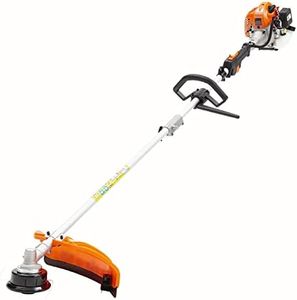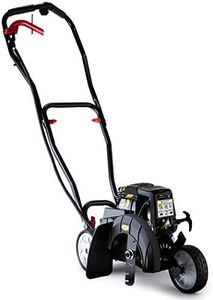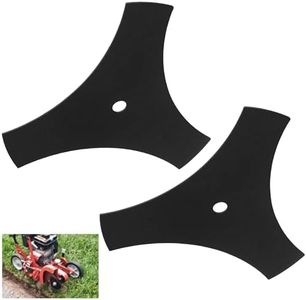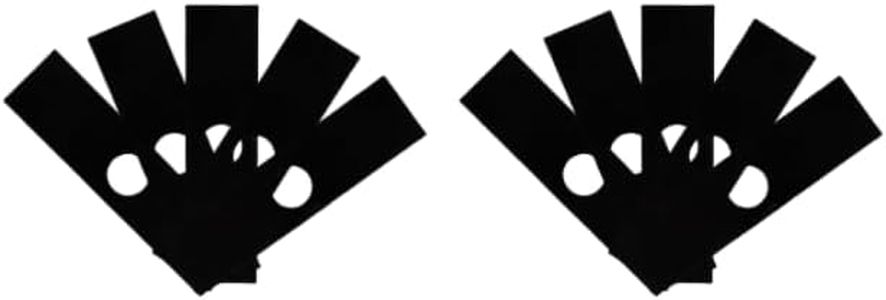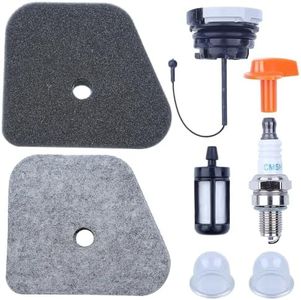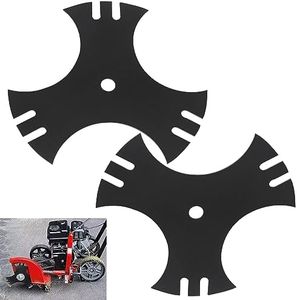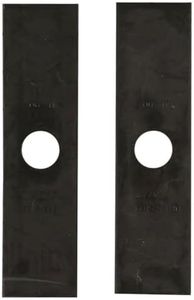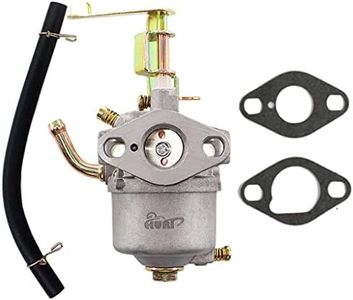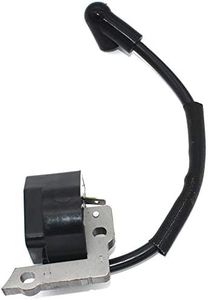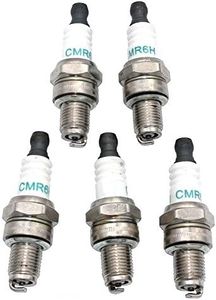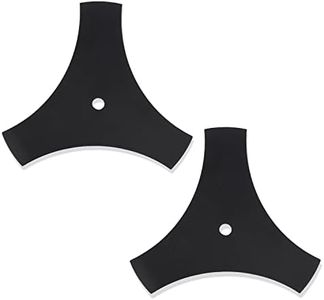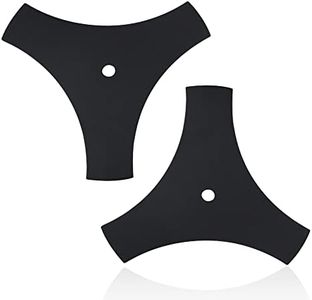We Use CookiesWe use cookies to enhance the security, performance,
functionality and for analytical and promotional activities. By continuing to browse this site you
are agreeing to our privacy policy
10 Best Gas Lawn Edgers
From leading brands and best sellers available on the web.Buying Guide for the Best Gas Lawn Edgers
Choosing a gas lawn edger can make a big difference in how tidy and attractive your lawn looks. Edgers create a clean, crisp border between your grass and sidewalks, driveways, or flowerbeds. Knowing the right features to focus on will help ensure you pick one that matches the size and complexity of your yard, as well as your comfort with handling outdoor power equipment. The key is to consider how you will use the tool most often and which features will make that job easier and more efficient for you.Engine Power (cc)Engine power, usually measured in cubic centimeters (cc), tells you how strong the edger’s engine is and how well it can handle tough, thick grass or overgrown edges. Lower cc engines (around 20-30 cc) are suitable for smaller, well-maintained lawns with softer grass. Mid-range engines (around 30-40 cc) are more versatile for medium-sized lawns or areas that might occasionally get overgrown. Higher cc engines (above 40 cc) provide maximum power and are best for large yards, frequent heavy use, or edging through thicker roots and soil. If your yard has lots of tough spots or you don’t want your edger to bog down, lean toward a higher cc.
Blade AdjustabilityBlade adjustability means how much you can change the depth and sometimes the angle of the blade. Some edgers offer simple up-and-down movement, while others may allow for angle adjustments as well. Shallow depths (1-2 inches) are good for regular clean-up where existing edges just need touching up, while deeper settings (up to 4 inches or more) are ideal for creating new edges or dealing with overgrowth. If you like to customize the look of your edge or have varying needs throughout your property, choosing an edger with more blade adjustability offers more flexibility.
Cutting Blade Type and SizeThe type and size of the cutting blade determines how efficiently the edger can trim borders and what kinds of edges it can create. Smaller blades (around 7-8 inches) offer good precision for intricate or curved areas, but may require more passes on thicker growth. Larger blades (9 inches or more) cover more ground quickly and are ideal for straight, long edges. Some blades have more teeth or special coatings for durability, which is helpful if your soil is tough or if there are lots of pebbles and roots. Your choice here depends on if you want fast results on long, straight paths or more detail work.
Start System (Manual vs. Assisted)Gas edgers may have different starting methods, such as a manual recoil pull cord or assisted systems with spring mechanisms or electric starters. Manual start is what most people are familiar with—pulling a cord, which can be easy or tough depending on your strength and the engine's responsiveness. Assisted start systems make it easier, ideal if you have limited strength or want a more reliable start every time. Consider your comfort with starting small engines and if you want a hassle-free setup, especially if you’ll be stopping and starting frequently.
Weight and BalanceHow heavy an edger is and how well it is balanced affects how long you can comfortably use it and how easy it is to control. Lighter edgers are easier to maneuver, especially for intricate or curved edging, but sometimes sacrifice power or durability. Heavier edgers often offer more stability and power but can be tiring for long sessions, especially if you are not used to handling outdoor power tools. If you anticipate edging for long periods or need to steer around lots of flowerbeds or obstacles, choosing an edger with good balance and manageable weight for your strength is important.
Wheels and ManeuverabilityMost gas edgers have wheels, ranging from simple two-wheel setups to three- or four-wheel designs for extra stability. More wheels help the edger stay steady and follow lines more easily, which is good for straight, long borders. Fewer wheels or pivoting front wheels can make it easier to handle curves or tight spaces. Look for features like adjustable wheel height or tread designed for different terrains if your yard isn’t completely flat. Pick the design that matches the layout of your lawn and the kinds of edges you want to create.
